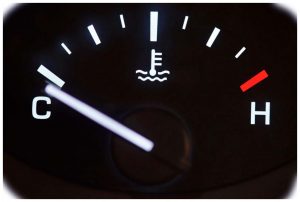Temperature is one of the most important factors to consider when assessing transmission performance. It directly impacts the system’s heat generation, lubrication, and friction. In addition, high temperatures can lead to increased wear and tear on transmission components. As such, all vehicle owners and mechanics need to understand how temperature can affect transmission performance and what they can do to protect it from high temperatures.
Causes of High Temperatures in Transmission Systems
There are several common causes of high temperatures in transmission systems:
|
Cause of High Temperature |
Description |
| High speeds | When a car is driven at speeds above normal, more heat is generated due to increased friction between moving parts in the transmissions system. |
| Low levels of lubrication | Without sufficient levels of lubrication between parts in a transmission system, more friction is created as these parts move against each other, resulting in higher temperatures being generated over time. |
| Overheated engine fluid | The fluid inside an engine serves as a coolant for the components within that system; if this fluid becomes overheated due to improper cooling or excess load on an engine then it may not be able to adequately cool the transmission system. |
How High Temperatures Affect Transmissions

Strategies to Prevent High Temperatures in Transmissions
There are several strategies that can be implemented to prevent high temperatures inside transmission systems:
-
Proper maintenance: Regularly checking and replacing oil and other fluids used in the transmission system will ensure enough lubrication to reduce friction between moving parts; this goes a long way towards reducing the overall temperature of the system over time.
-
Regular inspection: Having an expert inspect the transmission system periodically for any signs of wear or damage is an effective way to ensure that all components are working correctly, reducing the likelihood of overheating caused by faulty components.
-
Drive at slower speeds: Driving at lower speeds reduces the heat generated in a transmission system due to friction between moving parts; this can help keep temperatures low while also prolonging component life.
Conclusion
Temperature is one of the most important factors when assessing transmission performance; it directly impacts heat generation, lubrication, and friction within the system, leading to increased wear and tear on components if not monitored closely. Fortunately, there are several strategies you can use to help protect your transmissions from high temperatures, including proper maintenance, regular inspection, and driving at lower speeds.


Add Comment